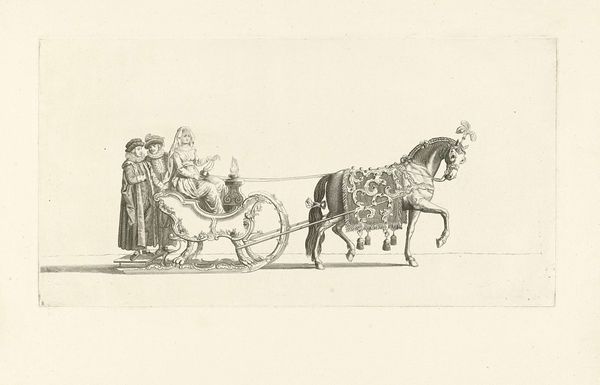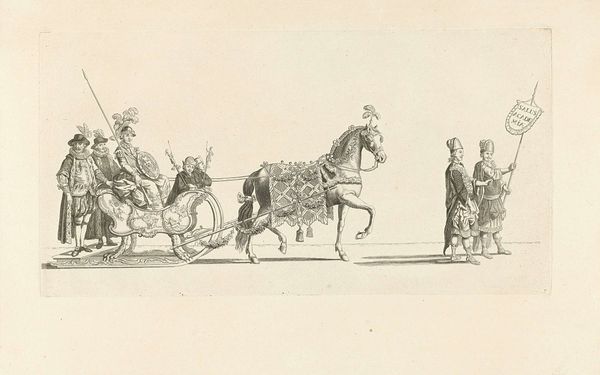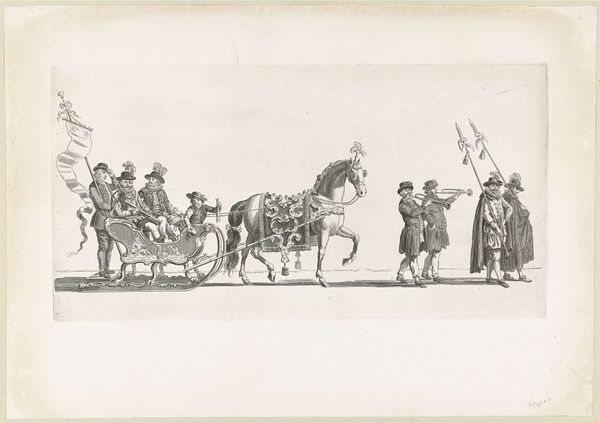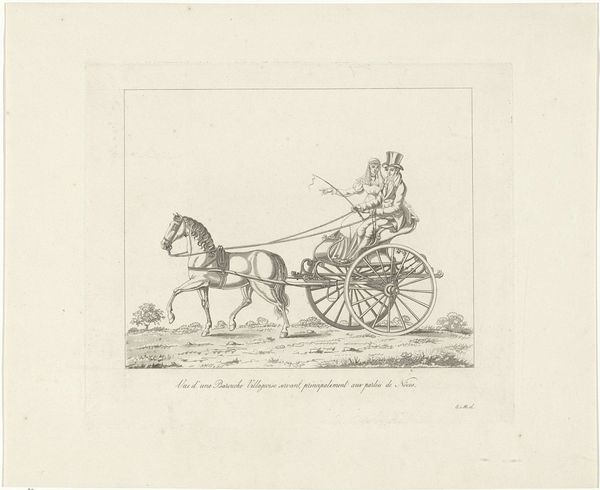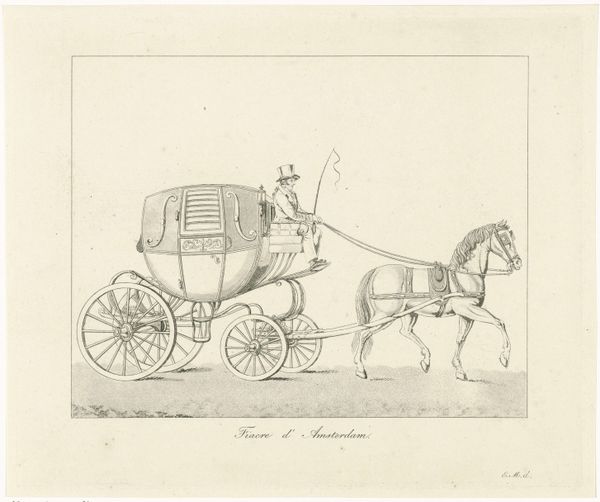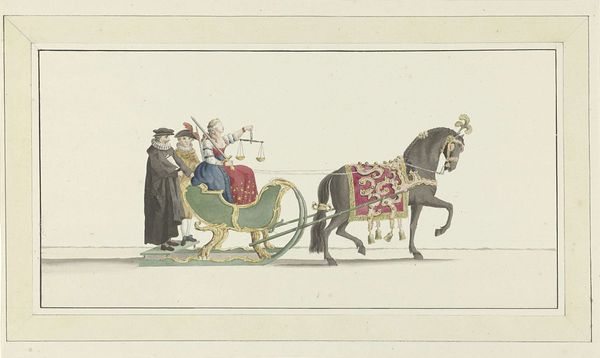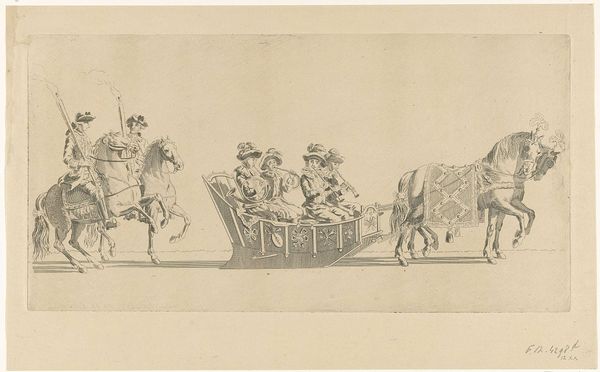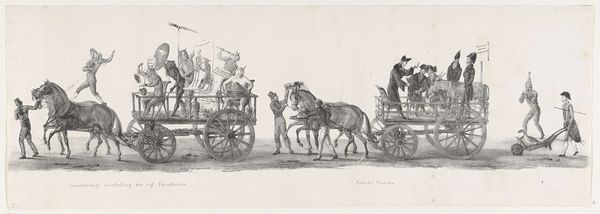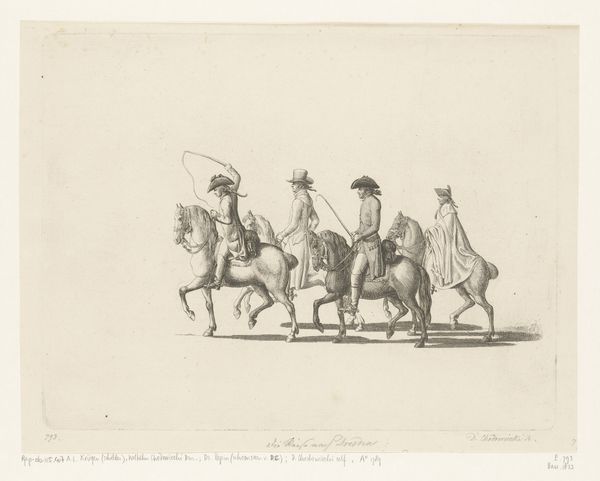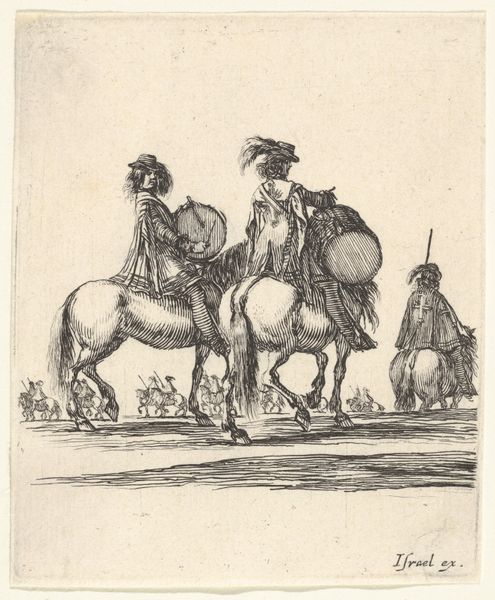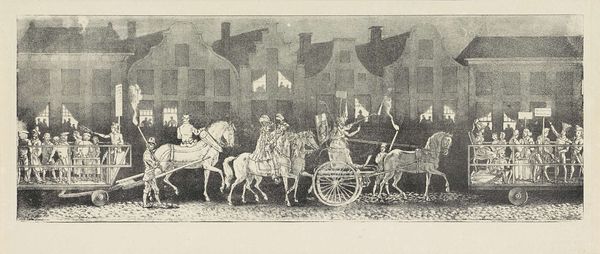
Dimensions: height 229 mm, width 441 mm
Copyright: Rijks Museum: Open Domain
Editor: Here we have Nicolaas van der Worm's etching "Tiende Slede," created in 1776. There’s a definite sense of formality and perhaps a touch of theatricality to it. What is your take on this piece? Curator: Looking at it historically, I see the "Tiende Slede" not just as a portrait or scene, but as a document reflecting the power dynamics and social rituals of its time. Who were these figures and what specific socio-political function might their representation have served in 1776? Editor: Hmm, good question. It does seem more than just a pretty picture. Are we perhaps looking at a form of propaganda? Curator: Possibly! Ask yourself: what is communicated to its intended audience? The opulence of the chariot and attire indicates wealth and status. But who is being represented? Who is the target audience? And what kind of message do you believe an etching, being easily reproducible, could broadcast? Editor: Perhaps it was made to convey Dutch national pride or something. Was the "Tiende Slede" commissioned or made for public consumption? Was it tied to any political event or movement? It seems like the image is communicating something, I am curious what, and to whom. Curator: Exactly! Now consider the Baroque elements in the piece—the elaborate detail, the theatrical presentation—and how they connect to contemporary trends. The social role and impact on shaping perception is key! Editor: I hadn't thought about the impact the etching technique had, since prints are made to be easily distributed and to influence perception. Thanks! Curator: And by considering who gets to be represented and how they are presented in a medium for wider consumption we gain more insight into what purpose these portraits served.
Comments
No comments
Be the first to comment and join the conversation on the ultimate creative platform.

